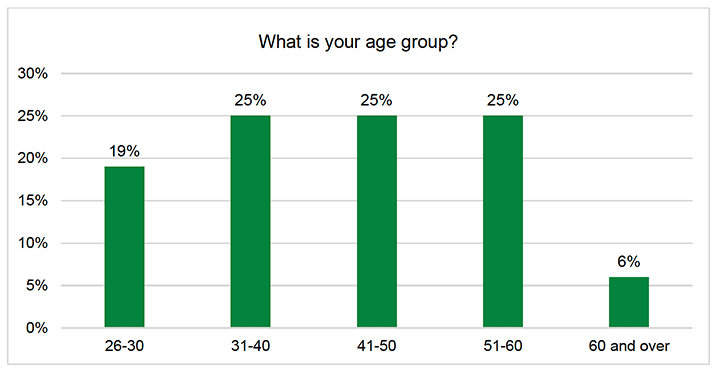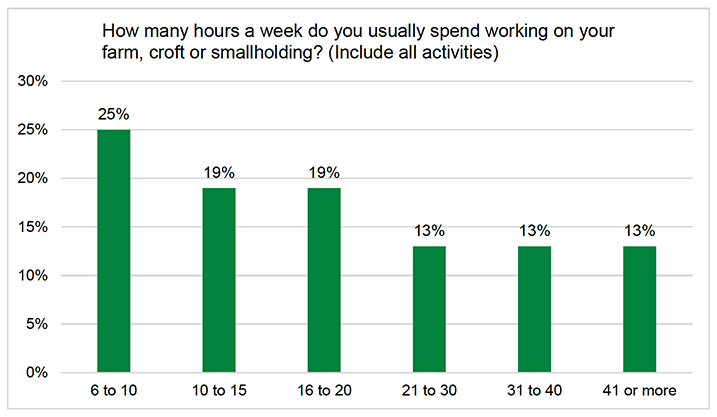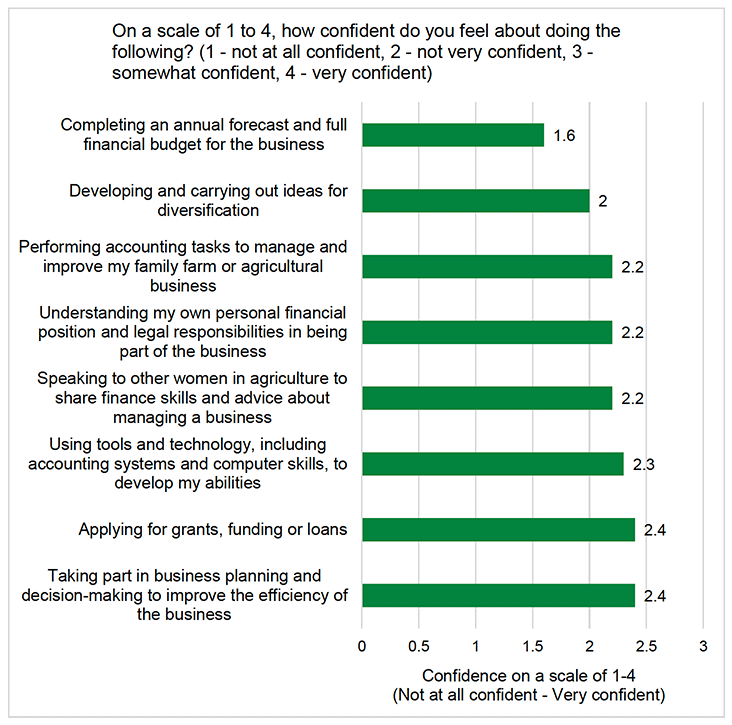Women in agriculture business skills training - focus groups: final report
This report outlines the main findings from research carried out to inform the development of two new business skills courses for women living and working in Scottish agriculture.
3. Questionnaire results
This chapter provides a breakdown of responses to the pre-focus group questionnaire. This asked participants: their age, location and whether they live or work on a farm, croft or in an agricultural business; how many hours they work; what types of business or finance activities they are involved in; and their confidence in carrying these out.
3.1 Age group
- A quarter (25%) of participants were aged 31-40, 41-50 and 51-60 whilst just under a fifth (19%) were aged 26-30 and 6% were 60 and over.[4]

3.2 Location
- Participants were asked which area of Scotland they live in. They live in the following locations: Aberdeenshire (12%), Ayrshire (12%), Dumfries and Galloway (6%), Fife (12%), the Highlands and Islands (35%), Inverclyde (6%), Lanarkshire (12%) and Perthshire (6%).
3.3 Role in agriculture
- Participants were asked if they live or work on any of the following: croft, farm, smallholding or 'Other, e.g. I work for an agriculture business'.
- The majority (76%) of participants live or work on a farm. Almost a quarter (24%) live or work on a croft. Over a tenth (12%) also selected 'Other, e.g. I work for an agriculture business'.
3.4 Working hours
- Participants were asked how many hours a week they usually spend working on their farm, croft or smallholding, including all activities.
- A quarter (25%) of respondents work 6 to 10 hours a week and just under a fifth (19%) work 10 to 15 hours. Over a third (39%) work 21 hours a week or more.

- Thinking about the activities they do on the croft, farm or smallholding, participants were asked if they consider themselves to work 'part-time', 'full-time' or 'Other, please write in'.
- The majority (80%) who answered this question consider themselves to work part-time. A fifth (20%) said full-time.
3.5 Business skills and confidence
Participants were asked what types of business or finance activities they are involved in on their farm, croft or smallholding.
They gave a range of examples, including:
- accounting, banking and paperwork
- book-keeping, value-added tax (VAT) returns, subsidy claims
- grant applications, and liaising with their accountant and bank
- negotiating utility contracts, overdrafts and loans
- arranging finance agreements and employee wages
- marketing, social media and ticket documentation
- maintaining livestock records; cattle/sheep registrations and movements
- paperwork; for example Rural Payments and Inspections Division (RPID) forms such as the Single Application Form (SAF, the crofting census
- business decisions; for example agritourism
- bank reconciliation / invoicing / cash flow reporting
- animal care and management
- farm record keeping (cropping / fertiliser / livestock, Quality Assurance scheme)
- other administrative tasks to support the day to day running of the business.
One participant was not currently involved in any financial activities.
Participants were asked if they would be interested in attending a business or finance skills course.
- The majority said yes (82%) and just under a fifth said 'not sure' (18%).
3.6 Confidence in carrying out financial activities
Participants were asked how confident they feel about doing a range of business and financial tasks, on a scale of 1 to 4 (1 - not at all confident, 2 - not very confident, 3 - somewhat confident, 4 - very confident).
- Confidence levels for all activities were low (see Figure 3).
- On average, respondents were most confident about applying for grants, funding or loans (2.4) or taking part in business planning and decision-making (2.4). They were least confident about completing an annual forecast and full financial budget for the business (1.6) or developing and carrying out ideas for diversification (2).

Contact
Email: socialresearch@gov.scot
There is a problem
Thanks for your feedback